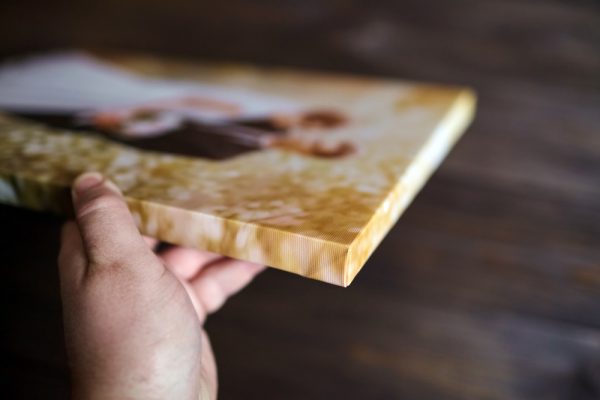Canvas is historically a popular choice for artists to paint upon, but it can be used for plenty more. Nowadays, with the advent of canvas printing, there are lots of ways you could make use of canvas without being a professional painter. Here’s how.
A quick history
Prior to the 16th century, most painters used wood paneling or simple cloth to share their art with the world. But the cloth would unfortunately come apart, it was flammable, and even if it made it to a museum or gallery, it became extremely delicate as time wore on. It’s thought that many ancient works were lost due to the weakness of it.
Wood paneling presented its own problems, as it was hard to transport, and the weather affected it greatly. If it was in a humid climate, it would expand and warp. If it was too cold, it would shrink and crack. Eventually canvas was discovered as a better alternative to either of these options, and starting in the 16th century (and up until today), professionals and amatuer enthusiasts alike used it to present their work or decorate their homes.
Canvas used to be primarily for artists. It was easily transported so their possibilities for subjects was now endless. No longer did they have to do all of their work by memory or from imagination; they could pick up and go to where their inspiration led them. This brought about some of Vincent Van Gogh’s most famous works like Irises, and Claude Monet’s Impression, Sunrise.
It also gave painters a way to create more texture in their works than ever before. Because canvas is more hardy than cloth, it can handle the extra coats of paint required to create depth within pieces. Just as importantly, it can handle the experimentation by some with intentionally ripping the canvas as part of the work.
Canvas and your photos
A trip to the museum is no longer required to see canvas put to great use, though. Now it’s easier than ever to use this versatile fabric within our own homes. Whether it’s through our own art with paint, decoupage, or inks, or through printing, canvas can be decor or a functional part of the house. This can be achieved through DIY means, or more easily through online canvas printing.
Having your pictures created online is as easy as ordering prints, but it makes a much bigger impact than traditional small frames. After choosing your picture or pictures, you’ll select what size you want. Keep in mind the area you’ll be displaying this in, as you want it to be proportional.
24” by 36” is about the size of most posters, making it great for a large wall or above a fireplace. But 16” by 20” works for smaller areas, or for a gallery wall of sorts. Be sure to take into consideration the resolution of your photo as well, as the smaller the resolution, the smaller the canvas should be as well, so as to ensure a clearer picture.
Once your order is placed, the picture is printed onto the size canvas previously chosen by a large laser printer (usually). After that, it gets stretched across a wooden frame built to scale, (or stretcher bars, as it’s commonly called) and then secured in the back by folding the excess fabric over and pinned or stapled to the wood. Your piece will be given time to dry, and then will be shipped to you.
Once you have your treasured memory forever etched into the stitching of the fabric, it’s up to you on how to display it. It could be part of a gallery wall that’s filled with other, smaller pictures, as well abstract pieces collected over the years. If you’ve chosen to show your wedding memories, your canvas print could be flanked by a shadow box containing your garter belt or other special memorabilia from the day.
Of course, you could always let the piece itself shine by giving it a space of its own, highlighted simply by the wall around it. Canvas has come a long way since the Italian Renaissance, but whatever way you choose to use it, it still stands the test of time.

